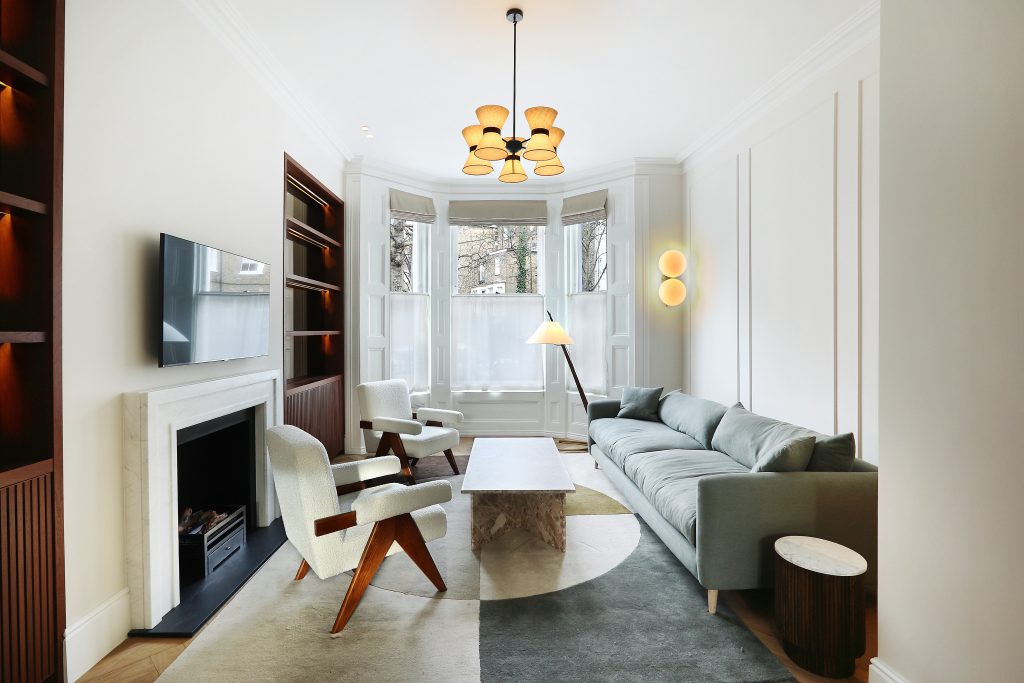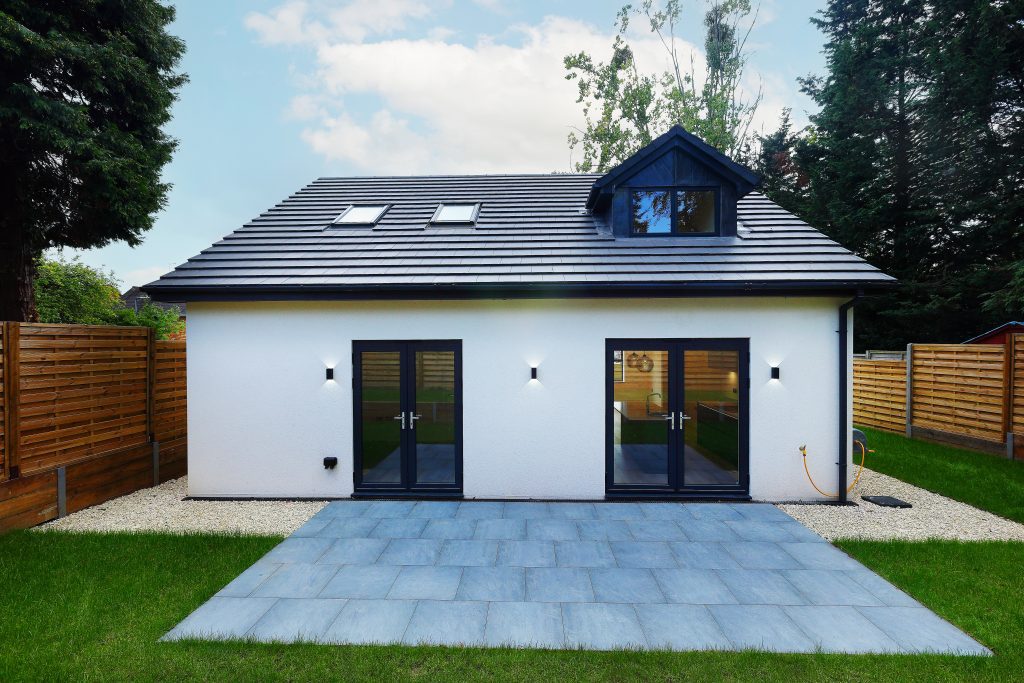Renovating a Victorian home is full of stories of ancient eras and presents a whole new set of challenges for Victorian house modern renovation. The charm of Victorian architecture is found in its intricate facades and timeless elegance. Each element reflects an ancient era, from the elaborate ceilings to the grand sash windows. However, despite its charm, some challenges come with refurbishing a Victorian house.
The lack of modern conveniences such as central heating and good insulation can make it difficult to create a comfortable living space without compromising the authenticity of the period. Owners must find ways to preserve the original character and beauty of Victorian houses while integrating modern conveniences. The key is striking the right balance between restoration and renovation.
Renovating Victorians, therefore means respecting their legacy for tomorrow. But how? In this guide, we will discuss how to renovate a Victorian house without affecting its legacy for the future. Let’s explore how old charm meets modern needs with Victorian house renovation in London!
Understanding Victorian Architecture

Let’s examine how the history of Victorian architecture influences the approach to renovation today.
The Essence of Victorian Style
A unique architectural style was introduced across England during the Victorian period from 1837 to 1901. Victorian homes showcase a wealth of design details that make their look absolute. Ornate woodwork and expansive bay windows show the era’s love of beauty and luxury. These houses blend influences from earlier eras like the Gothic and Jacobethan styles along with principles of the Arts & Crafts movement. Through their unique designs, Victorian structures reflect the rich tastes of the time in a way that still captures visitors today.
Certain typical characteristics help identify Victorian homes:
- Brick or stucco facades with bays, turrets, and imposing front doors
- Slate or clay tile roofs
- Multi-pane sash windows
- Detailed exterior trim like brackets and bargeboards
- Spacious rooms with high ceilings
- Elaborately carved fireplace surrounds
- Coving, ceiling roses, picture rails, and paneling
- Stained glass details and tiled floors
Historical Context and Its Impact on Today’s Renovations
To renovate Victorian homes successfully, it’s important to understand the historical origins behind their iconic architectural details:
- Industrial Revolution: Mass production enabled decorative wood trim, hardware, and finishes to be manufactured efficiently using machinery. This made ornate features affordable for middle-class Victorians.
- Transport Advancements: Rail, canals, and improved roads facilitated the transportation of stone, slate, timber, and other building materials across Britain. Local quarries supplied stone while imported wood arrived from overseas.
- Literacy & Marketing: Pattern books, catalogs, and marketing materials spread design ideas through the growing middle classes. Builders could replicate the latest popular styles for clients.
- Consistency: Standard construction methods and sizing of materials like bricks helped achieve continuity in Victorian buildings across regions. Interchangeable parts aided mass-scale homebuilding.
Today, strict regulations govern changes to protected heritage buildings. Experienced specialists are needed to restore or recreate ornate details in keeping with original Victorian craftsmanship and aesthetics. Understanding the period context ensures renovations retain these homes’ historic integrity and charm for future generations to enjoy.
Pre-Renovation Considerations
Careful preparation is key to successfully updating a Victorian house without sacrificing its period charm. homeowners should understand essential considerations before beginning their renovation work.
Assessing Your Victorian House’s Needs
Before beginning a Victorian renovation, it’s crucial to evaluate the property’s structural and aesthetic needs thoroughly because this assessment provides critical insights into the home’s essential repairs vs. desired enhancements to inform renovation plans.
- Hire a professional structural survey to identify foundation, roofing, and stability issues needing repair.
- Assess modernization needs like electrical rewiring, plumbing replacement, and HVAC upgrades.
- Review room layouts and circulation flows; identify desired changes like opening up walls.
- Note down the beautiful original architectural details to protect, like ceiling plasterwork, flooring, and woodwork.
- Make house renovation checklist of areas needing decorative refreshing, like dated kitchens or bathrooms.
- Prioritize must-have updates vs. nice-to-have renovations
Planning Your Victorian Renovation Project

Careful front-end planning is the most important investment toward a successful, cost-effective Victorian renovation. It sets the project up for smooth execution and prevents problems. To do this:
- Look for architects and contractors experienced in working with Victorian homes who can identify pitfalls and smart solutions. When hiring architects or contractors, getting multiple quotes to estimate costs accurately is recommended. Unexpected issues can drive overruns.
- Balance restoring original layouts with reconfigurations to meet modern needs.
- Prepare for contingencies before renovation begins – Victorian houses often have hidden problems.
- Secure all necessary permissions and consents from local authorities before finalizing designs
- Consider lead times for approvals, custom fabrications, and specialized labor.
Key Areas of Focus for Victorian House Renovations
While each home is unique, certain areas often need attention when renovating a Victorian property. Victorian renovations typically focus on three main areas to both preserve and modernize the home:
Structural Integrity and Restoration

Victorian architecture can present structural issues:
- Settling foundations causing sloped floors or cracks.
- Leaky roofs cause damp and deteriorated plaster.
- Obsolete drainage and insufficient ventilation promote mold.
- Outdated load-bearing walls prevent the opening up of rooms
Before decorative improvements, ensure the property has structurally sound, good, and stable footings. You should focus on structural repairs and upgrades to strengthen the renovation. Use traditional techniques like lime plastering for repairs to retain heritage character. Improving insulation will also protect the home’s structure.
Modern Conveniences and Energy Efficiency
Victorian house restoration typically requires extensive upgrades to essential systems, including
- Electrical: Rewiring is often needed to eliminate fire risks and increase capacity for modern demands. Install new fuse boxes, circuits, and sockets discreetly.
- Plumbing: Poor old piping must be replaced. Creatively incorporate in bathrooms and kitchens. It is also recommended to reroute supply lines when rearranging floorplans.
- HVAC: Radiators or underfloor heating provide warmth without damaging original features. Update fireplaces to burn safely and efficiently.
- Technology: You can automate lighting, security, and climate control while preserving aesthetics. Consider renewable additions like solar thermal panels on rear-facing roof sections. Upgrade hot water systems and heating controls.
- Insulation: Insulate roof rafters and attic spaces and employ breathable materials between walls to avoid moisture risks
- Windows: Add storm windows or insert updated glaze into existing sash windows.
Preserving Original Features and Aesthetics
Where possible, meticulously repair and restore beloved period details because renovations should highlight, rather than cover up, these heritage gems.
- Woodwork: Repair original architraves, fences, doors, and parquet floors. Refinish timbers, appreciating the unavoidable signs of aging.
- Tiling: Source replacement decorative tiles to repair damaged sections of the original flooring. Clean and seal to refresh period patterns and motifs.
- Windows: Repair original wood or iron-framed sash windows via reglazing, sanding, and repainting. Add slimline double glazing only if essential.
- Fireplaces: Update fireboxes and flues so fireplaces can be safely used.
- Plaster Detailing: Specialist artisan plasterers can thoroughly repair or recreate delicate ceiling roses, cornices, and covings based on original examples. Use lime plaster for repairs.
Victorian Renovation Ideas and Inspirations
Victorian homes demand creativity in restoration and contemporary design. Here are some modern house trends and successful refurbished Victorian house renovation ideas and inspiration to start your renovation work today!
Interior Design Trends for Victorian Homes

When renovating a Victorian home, the interior design should balance preserving the property’s heritage character and incorporating contemporary amenities. Here are a few tips that you may consider.
Color Palette
Deep, moody hues work beautifully in Victorian spaces. Consider rich tones like emerald, navy, charcoal, and eggplant for walls. Accent with metallics like champagne gold and antique brass. Use texture and pattern to add depth with flocked wallpaper, woven trim, or embossed wall panels.
Flooring:
Where possible, restore the original parquet, tile, or inlaid floors. Complement with vintage revival rugs featuring scrolling motifs or luxe materials like silk. Hardwoods like oak or walnut work well, as do natural stones like marble or slate. You can also layer on plenty of plush area rugs.
Windows
Retain heritage features like stained glass, but ensure great natural daylight with new skylights or light tunnels as needed. Install interior transom windows to filter the sun between rooms. Use panels of velvet or damask to frame windows elegantly, and it is also advised to use shutters, Roman blinds, and thick-lined draperies to establish a cozy vibe.
Seating:
Incorporate a mix of seating options in your living space. Tufted sofas offer comfort, while carved antique chairs and claw foot benches provide historic appeal. Make sure to update curvy modern settees and finish seating areas with ottomans to put up tired feet.
Kitchen & Dining:
For kitchen cabinetry, select deep hues like navy or forest green. Contrast against light natural stone countertops. Include glass-front cabinets to display heirloom dishware. You can extend built-in banquettes around the countertops to accommodate casual family meals. Use an oversized iron chandelier to make a stunning statement over the dining table.
Bedrooms & Bathrooms
The best way to transform a bedroom is to mix antiques with custom upholstered beds that make you feel like you’re lying in heaven. In bathrooms, accent with ornate mirrors, ceramic tile wainscoting, and pedestal sinks. Install vintage reproduction fixtures with details like porcelain handles or scrolled feet to evoke Victorian luxury.
Moldings
Make decorative ceilings and wall moldings look as good as new. Expert artisans can repair or recreate detailed plaster medallions, ceiling roses, dentils, and corbels based on existing examples within the home. You can also add custom crown molding for a stately frame effect.
Built-ins
Incorporate new custom built-ins to maximize storage while retaining a seamless aesthetic. Replicate the look of antique cabinets with arched tops, detailed carvings, and brass hardware. Use built-ins to conceal modern necessities like TVs and sound systems.
Fireplaces
Fireplaces are central focal points that’s why it is essential to repair or replace aged tile surrounds, selecting eye-catching colors and patterns like geometric mosaics. Install gas inserts or electric fireboxes to make fireplaces functional without extensive masonry work. Incorporate mantel mirrors and built-in bookshelves for flanking storage.
Wall Treatments
Wallpaper defines the authentic Victorian interiors, choosing bold damasks, elaborate Chinoiserie patterns, and flocked designs. Use decorative picture rail moldings to hang artwork properly above the wainscoting. Consider textured treatments like embossed leather, Venetian plaster, or fabric paneling for a more aesthetic wall appearance.
Lighting
Create a dramatic atmosphere with crystal chandeliers, pendant lamps, and sconces that feature candle bulbs. Position lamps throughout to create pockets of cozy ambient lighting. You can also use modern light with smart technology to control scenes and dimming as per your requirements.
Accessories
Accessories play an essential role in home decoration, making them look more appealing. For Victorian houses, you can display treasured books, sculptures, stuffed birds and taxidermy, clocks, framed butterflies or beetles, star charts, and other quirky antique decor. Incorporate natural elements like mineral specimens, shells, and coral. Floral arrangements in ceramic vases also display a Victorian allure.
Before and After: Transforming Your Victorian Home
Transforming a dated 1980s home in Maidenhead wasn’t a small feat for us. It combined intricate structural demands and a steadfast commitment to preserving and enhancing the home’s antique appeal. Together, our talented group of designers at Fittra and an informed homeowner renovate the home with style. What we did, let’s discuss here!
Structural Challenges and Modern Integration
With deep-set concrete planks, the original home structure was distinct from traditional wood frameworks, but this didn’t stop the team. Working around such architectural challenges, they maintained existing structures and smoothly incorporated modern elements for a sleek and rejuvenated feel. Here, you can see the after-effects in these victorian house renovation pictures.

Crafting the Ideal Layout
The team and interior designers thoroughly reviewed the property’s layout, adjusting any suggestions by the homeowner. The result is a balance between personal needs and function, including the client’s needs. You can see the original results in this image.

Aluminum – For Windows and Doors
Every window and door saw a transformation, opting for aluminum for an even, premium look throughout the house. Guttering and downpipes were upgraded to match the house’s general ambiance and distinctive aspects. You can see the original results in the below image.

Rear-End Re-Modifications
A lot changed at the house’s back end—original bay windows were removed, and elegant glass sliding doors were installed. This major renovation made the space feel more light-filled and current, as shown in the image.

Technological Advancements for Contemporary Living
The house gets fresh electrical and plumbing systems for a modern way of life. Smart lights are also added. The core structure remained the same, but the insides got a face-lift. Now, we have a mix of old-world charm and new-age comfort. Check out the grace of adding modern in the living space in the below picture.

Custom Woodwork and Consistent Decor
With careful planning, the whole house got custom woodwork that matched every room’s decor. These were made to fit the customer’s needs and requirements. You can see the original results in the below image.
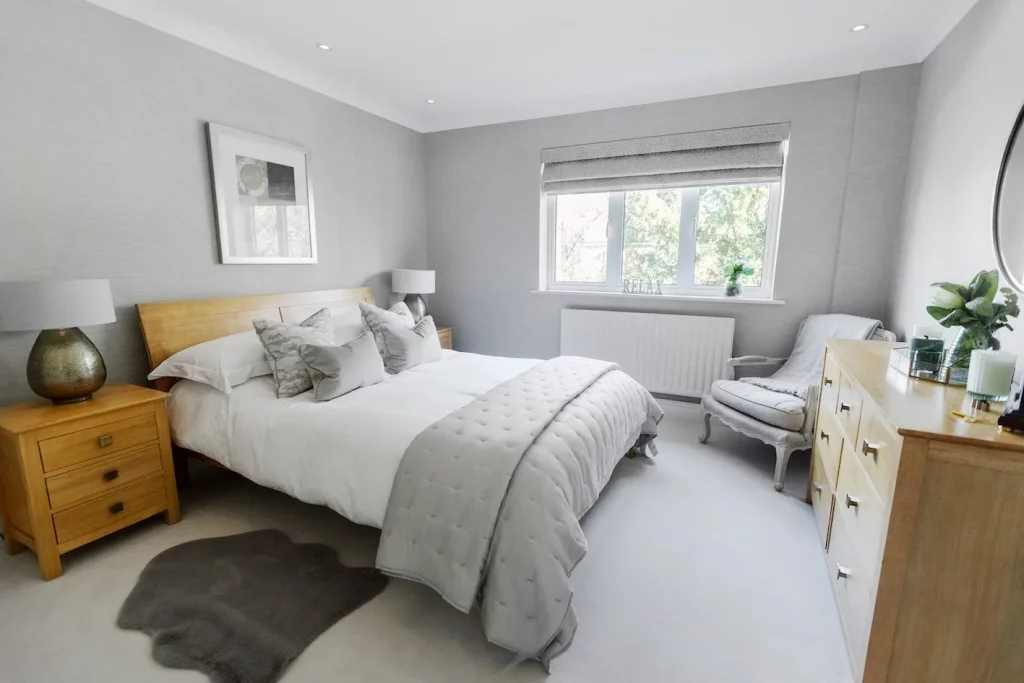
Renovating Specific Types of Victorian Properties
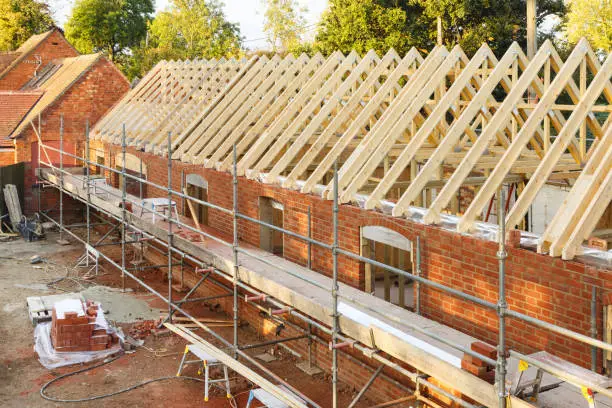
Different property types offer different Victoria renovation considerations and opportunities.
Terraced House Renovations
A terrace house with shared walls requires creative solutions in order to enhance livability within its small area. Here are some tips for renovating a Victorian terraced house:
- Rear Extensions
A single-story rear extension can significantly enlarge ground-floor spaces like kitchens and dining rooms. Use a lean-to style with a pitched roof and skylights to avoid dominating the rear facade. It is also recommended to match materials to the existing exterior.
- Loft Conversions:
You can add rooms by converting underutilized attic space into bedrooms or a master suite while maintaining the streetscape facade. Dormer windows illuminate interiors without compromising exterior balance.
- Basement Remodeling:
It’s possible to transform a basement into a livable space without having to expand the building footprint with Victorian terrace house renovation. You can use this place for a media room, gym, or guest suite.
- Interior Reconfigurations:
Rearranging interior layouts can improve flow and natural light. Open up staircases, remove non-load-bearing walls, and rework cramped galley kitchens into spacious open-plan dining spaces.
- Side Returns
A side return extension with stepped-in upper floors minimizes backyard space while adding an extra living area. Match the pitch and materials of the existing roofline and limit windows overlooking neighbors for a perfect Victorian terraced house renovation.
Semi-Detached House Renovations
Semi-detached Victorian houses have more outside walls. Plus, they’re usually bigger! This gives you additional flexibility. Here are the tips for Victorian semi detached house renovation.
- Two-storey rear Extensions
Building an extra two floors at the back of the house keeps things even. Also, it gives you a larger new kitchen, dining, and living room area. Just use a roof that matches the original and a doorway to connect old and new seamlessly.
- Side Extensions:
A ground-floor side extension can accommodate an office, library, or first-floor main suite without impacting the street view. Stepping upper floors back from the sidewalk prevents a bulky addition.
- Loft Conversion
Like with row homes, converting unused attic space into bedrooms or a lavish master retreat allows for accommodating modern families within the original structure. Enhance natural light with dormer windows.
- Wraparound Extensions
For a significant enlargement, a wraparound extension on the back and side can nearly double the ground floor. Use different floor heights and roof lines to make it look cool.
Detached Home Renovations
Detached Victorian houses also have the greatest flexibility for additions:
- Two-Storey Rear Extensions
Construct a substantial two-storey rear extension to vastly expand the floorplan with open-concept kitchens, spacious great rooms, and master suites. And make sure the architecture matches the existing building.
- Rear Conservatories
A glass-walled conservatory addition is perfect for filling the interior with natural light while serving as a greenhouse sunroom year-round. You can add French doors and vaulted ceilings for an elegant touch.
- Side Garages or Workshops
Constructing an attached side garage or backyard workshop addition provides useful space without compromising the historic rear facade. Make sure to match the roof pitch and add windows in the same style.
- Carriage House Renovations
You can use your standalone carriage houses by turning them into garages, art studios, or maybe a cozy guest place. While doing up the insides, keep the original exterior untouched and preserve things like doors, windows, and finishes.
Extensions and Additions
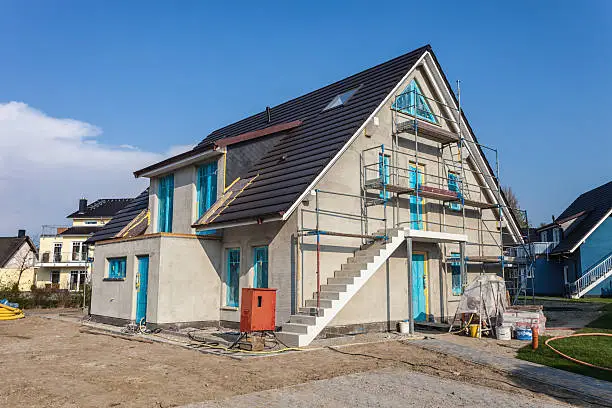
Let’s know about the different extensions and additions that you can consider while renovating Victorian house.
Planning and Executing Victorian House Extensions
Where space is limited, carefully planned extensions can increase the living area while retaining the heritage essence. The various types of extensions include
- Rear Extensions
Rear extensions add space to the back of the house while keeping street view changes to a minimum. The perfect choice for Victorian homes is a lean-to structure with a mono-pitched roof that’s less tall than the existing roof’s ridge. For more natural light, include skylights and windows facing the backyard. Use bricks, wood, or stucco siding to resemble the original exterior. Add bay windows or decorative trim for some unique architecture. French doors can create a smooth indoor flow, but make sure the color, flooring, and molding transitions between the existing and new spaces are subtle.
- Side Return Extensions
This design gives your house more area without taking too much space from your garden. Make sure the upper floors don’t look overly big from the front. The new roof should slope downwards, matching the angle of the current roof. Align the new windows with the ones on the lower levels. Choose subtle materials like brick or stone over modern metals and glass. Add plants to blend the old walls with the new addition.
- Wraparound Extensions
When extending a building, you can create a seamless connection between the existing structure and the new addition by wrapping the back footprint around one side. To add visual interest, consider using a catslide-style roof for the rear portion while keeping the roof on the side section lower.
You can also create different levels within the interior by incorporating open patios or extended terraces. It is important to preserve the original exterior treatment, such as shingles or timbering, and match these materials on the new walls. Additionally, maintain a sufficient outdoor yard space. To ensure a smooth transition between the older and newer sections, consider curving the corners of the building.
- Basement Additions
If you want to add more space, you can enlarge your basement. This can give you a new game room or a place for guests to stay, all without causing a mess upstairs. Use the windows and doors that are already there in the basement. Make sure everything fits in with the outside of your house. Don’t forget about adding big exit windows, fresh air, and ways to control moisture downstairs. Also, remember to add strong metal pillars and beams if you’re making the basement bigger.
Legal Considerations and Permissions
Renovating a Victorian house in London takes planning and legal permissions also. Permissions like planning consent, conservation approval, and rules for protected buildings matter. Here are some things to keep in mind:
Navigating Planning Permissions and Regulations
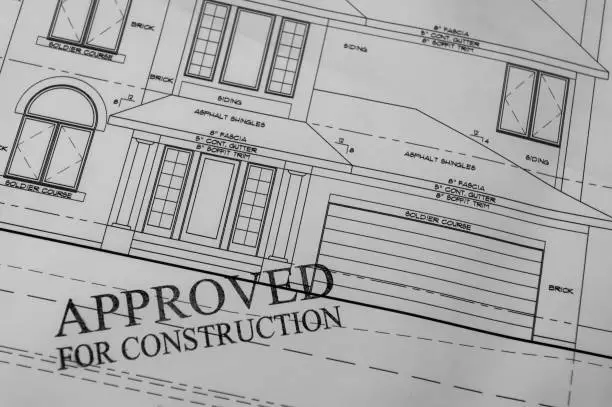
Here are the planning permissions and regulations for listed buildings and conservation areas.
- Listed Buildings: Renovating a protected building like a Grade I(indicates exceptional interest requiring maximum preservation), Grade II (marks particularly significant buildings with strict limitations on changes), or Grade II(covers buildings of special interest warranting every effort to preserve heritage) home needs Listed Building Consent (LBC) from local planning. This approval covers interior and exterior work that may impact the historical importance.
- Conservation Areas: Residing within a conservation area necessitates a more considerate approach towards planning proposals in order to preserve the area’s distinctive character. Apart from the regular planning application, obtaining conservation area consent is mandatory for specific activities, including demolition works.
Additional Considerations
- Extensions require knowing permitted development, which may face limits in conservation zones or historic structures.
- Renovations to historic buildings need meet standards. Rules exist to preserve structures of architectural importance.
- Renovating a Victorian home requires care and respecting its history. Working with professionals and getting approvals will help guarantee the work follows rules.
- Major renovations like significant structural, layout, plumbing, and wiring changes plus a full refurbishment require guidance. Be sure to follow applicable laws and rules.
Budgeting for Your Victorian House Renovation

Due to the need for specialized skills and materials, renovating a Victorian building represents a major investment requiring careful budget planning. Here’s how to manage the budget for London Victorian house renovation:
Cost Estimation and Management
Check out a few tips on how to estimate and manage costs for your Victorian house renovation effectively:
- When beginning a construction project, developing a detailed budget is essential for keeping costs under control. Create a comprehensive list of anticipated expenses covering all elements of the work – materials, labor for skilled tradespeople, required permits and fees, unexpected additional costs. Be sure to account for design fees, demolition, and equipment rentals.
- Get quotes from multiple experienced contractors. Compare detailed breakdowns of house renovation cost including labor, material costs, fees, and timelines.
- Carefully examine the credentials of professionals experienced in historical construction methods. It is important to note that premium pricing is to be anticipated in such cases.
- It is advisable to allocate approximately 20-30% of the budget for contingency funds in order to account for unexpected circumstances such as repairs, regulatory changes, removals, or delays.
- In order to effectively distribute resources, it is essential to allocate funds towards crucial aspects such as structural stabilization, safety enhancements, utility modernization, layout modifications, and necessary amenities.
- Upgrade your key areas, such as gourmet kitchens, luxurious bathrooms, and eye-catching lighting fixtures, while incorporating more cost-effective materials in other parts of your home.
- When facing budget limitations, it is advisable to divide extensive renovations into smaller phases that can be completed over several years. This allows for better financial management while still achieving the desired outcome.
- Discover various financing alternatives, such as lines of credit and construction loans, that offer the flexibility to finance long-term renovations. These options can be particularly useful for projects that span multiple years.
- It may be necessary to make strategic decisions in order to fulfill key objectives while adhering to financial constraints.
Why Choose Fittra for Your Victorian House Renovation

As West London’s premier specialist in period architectural renovations and extensions, Fittra brings unparalleled expertise to updating your Victorian home.
Your Most Convenient Construction Company in West London
Fittra, a construction company based in London and registered with NHBC, provides expert services for both residential and commercial projects.
- We have reliable architects, engineers, and designers who guarantee exceptional craftsmanship.
- Fittra offers a wide array of services, ensuring that you are supported throughout every stage, from initial consultation to project completion.
- Fittra holds accreditations from respected groups like NFB, FMB, and NHBC. We provide £5 million insurance for public and product liability, plus £10 million for employer’s liability.
- Fittra stands as a great choice with fair pricing, offering reasonable rates without losing quality.
Comprehensive Services Offered by Fittra
We handle every aspect of realizing your vision, from initial sketches to final touches. You don’t need to coordinate various individual contractors. Fittra is your expert guide through the entire renovation process. We offer:
- Design consultation, planning applications, architectural drawings
- Structural restorations, exterior facelifts, interior finish updates
- Kitchen, bath, and basement conversions
- Loft extensions, side and rear additions
- Project management ensuring quality workmanship on budget and schedule
The Fittra Advantage: Why We Stand Out
Our specialized approach is tailored to each Victorian home. We stand out because we offer:
- Free in-home consultancy to develop a personalized renovation plan
- Fixed transparent pricing with no hidden costs or surprise overages
- A dedicated project manager guiding each job from start to finish
- Passionate about preserving period architectural integrity
- Top area reviews for expertise, quality of work, and customer service
Conclusion
For over a century, Victorian homes have been known for their architectural gems and admired for their timeless beauty and character. Thoughtful renovation allows them to comfortably accommodate modern life without sacrificing their heritage and history. With proper care and renovation, these renovated Victorian houses will continue gracing our neighborhoods for generations more, their stories growing ever richer.
If you want to renovate your Victorian house? Fittra would love the opportunity to make your Victorian home renovation vision a reality. Contact us for a free consultation today!
FAQs:
Can I add Smart Home Technology to a Victorian House Without Losing its Character?
Yes, smart home technology can be integrated discreetly. Here’s how
– Conceal wiring inside existing chases and voids to avoid damaging the original walls.
– Use wireless controls, sensors, and voice commands to limit wiring needs.
– Position hubs and equipment in basements or attics away from ornate rooms.
– Choose slim, small-profile devices finished to blend into the historic decor.
– Ensure exterior antennas, satellites, and conduits don’t detract from facades.
What are the Specific Challenges of Insulating a Victorian House?
Key insulation challenges include:
– Retaining attractive original plasterwork like ceiling roses while sealing attics.
– Avoiding damage from drilling into delicate lath-and-plaster walls.
– Addressing gaps without removing period moldings around windows and floors.
– Using breathable materials that won’t cause moisture issues from condensation.
– Improving ventilation sufficiently while boosting energy efficiency.
– Finding space for extra thickness added by internal or external insulation.
How do I Find the Right Contractors Experienced in Victorian Renovations?
Search for contractors who specialize in period restorations and have extensive portfolios proving their expertise. Ensure they demonstrate knowledge of specialized techniques for repairing ornate plaster medallions, incorporating new wiring into lath-and-plaster walls, and sustaining structural integrity. Ask for multiple client references to verify quality workmanship.
Are there any Government Grants Available for Renovating Historic Victorian Homes?
Yes, there are grants available for renovating historic Victorian homes in England. The Historic Preservation Fund, run by the National Park Servic,e supports projects like grants for historic preservation in communities. State and local governments also offer grant and loan programs for historic preservation. The National Trust for Historic Preservation provides various grants like the Bartus Trew Providence Preservation Fund and the Cynthia Woods Mitchell Fund for Historic Interiors. There are also specific grants like Repair Grants for Heritage at Risk, which gives money for restoring listed buildings, scheduled monuments, and registered parks and gardens. Property owners should check with their state officer to learn about grants and loans for their area’s historic preservation.


